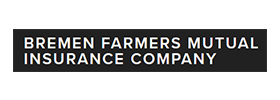Ghosts, zombies, ghouls, and ransomware – one of these things is not like the other. While it’s true that monsters and Jack o’ Lanterns have been the featurette of Halloween, business owners have something even bigger to be afraid of: cybercrime. Cybercrime comes in many, many forms, but one of its most popular (and perhaps most harmful) forms of cybercrime is ransomware, a malicious digital attack on your business’s valued technological assets.
This article isn’t to necessarily frighten you so much as it is to inform you, but we couldn’t ignore the irony of this year’s Cyber Month including a Friday the 13th. So, to stick with the theme, let’s talk about the big Halloween scare: ransomware and how it can affect your business!
What is Ransomware & Why Should I Be Scared?
Ransomware, by definition, is a criminal act by which a cybercriminal – an individual or entity – breaches a company or organization’s network and steals their digital assets, usually financial information or private client data. That data is then held for ransom and may be “frozen,” and therefore unable to be accessed by the company or organization.
Ransomware can be devastating. For one, it can be seriously impactful to a business’s operations to be unable to access critical data and information. Two, it can be a breach of privacy for the clients’ whose data may have been stolen. Later down the line, that can lead to costly lawsuits. That’s not even to mention the potential amount of money the data could be held ransom for, which for smaller businesses may seriously harm their finances.
Any business that uses data may be at risk of ransomware. It happens more often than you might think, and increasingly so as more and more organizations utilize data and technology in their everyday operations. Even your casual Mom and Pop shop working off the Corner of X Street could be exposed if they store any financial data on their computers.
Ransomware and Businesses: 2023 Statistics
To put into perspective just how catastrophic a ransomware attack (or any sort of cyber attack, for that matter) can be on your business, we’ve compiled a list of up-to-date commercial ransomware statistics. Keep in mind that large and small businesses alike are impacted by ransomware. These stats don’t exclude businesses with fewer than five employees, and in fact those businesses may make up a larger proportion of the businesses that are affected. Smaller businesses may be less “appealing” to cybercriminals, but their fortifications are often less than that of larger companies and therefore are easier to breach.
- Healthcare ranks as the costliest industry for a breach, with breaches costing $10.1 million on average.
- Phishing (sending malicious emails or attachments through email, posing as either a reputable individual or entity) continues to be the most popular scam in 2023.
- In 2023, ransomware makes up about 24% of all cyber attacks.
- According to a report from IBM, it can take a year (on average) to identify and contain ransomware. Paying for the ransomware has been proven to not result in any cost savings.
- As cloud technology is adapted more and more, it too becomes a target for ransomware and is becoming increasingly exploited.
Many of the “big breaches” we often here about are involving those large companies, like Microsoft or Facebook, but that doesn’t mean that breaches aren’t happening regularly to the smaller guys, either. They just don’t make headlines like the big businesses do. It’s serious business, cybercrime! Here’s how you can keep your business safer:
Creating a Business Cyber Toolkit to Stay Safe
Just because it only might happen doesn’t mean your business shouldn’t take its cyber safety seriously. Even if you think you don’t have much to lose, taking action to protect your business’s digital assets can go a very long way – and can save you a serious headache later down the line.
Cyber insurance is just one aspect of cyber safety. To be transparent, you won’t have much luck finding a policy if you aren’t already taking measures to keep your organization safe.
Those measures, which we’ve talked about in previous blogs this Cyber Month, are doing such things as training employees on the latest up-to-date cybersecurity tips, implementing multi-factor authentication, installing (and regularly updating) your system’s firewall, having remote employees use a VPN, and more.
Small steps like these should be regularly incorporated into your business’s everyday operations. Doing so can greatly mitigate your odds of being involved in a data breach, ransomware event, or cyber attack, or at least help your organization to identify if you’ve been targeted by a scheme.
And finally, get cyber insurance. If all else fails, it’s valuable to know you have the backing of a comprehensive insurance policy to safeguard your assets – digital or otherwise.
Certain cyber insurance packages will also come with access to cybersecurity experts, who can help your business not only bolster its existing cybersecurity protocol but provide a step-by-step path to recovery if you’re ever finding yourself needing to recoup following a cyber attack. Ask an AHI representative for more information about this option.
Get Insured this Halloween with AHI Group
Before you start to decorate the office and prepare for your “spooky staff party,” it’s time to get your business adequately protected with the right cyber insurance. AHI helps its commercial partners get the cyber insurance they need.
Give us a call to discuss your business’ technological needs today and we’ll happily start the process of finding you comprehensive cyber insurance. Happy Friday the 13th!























